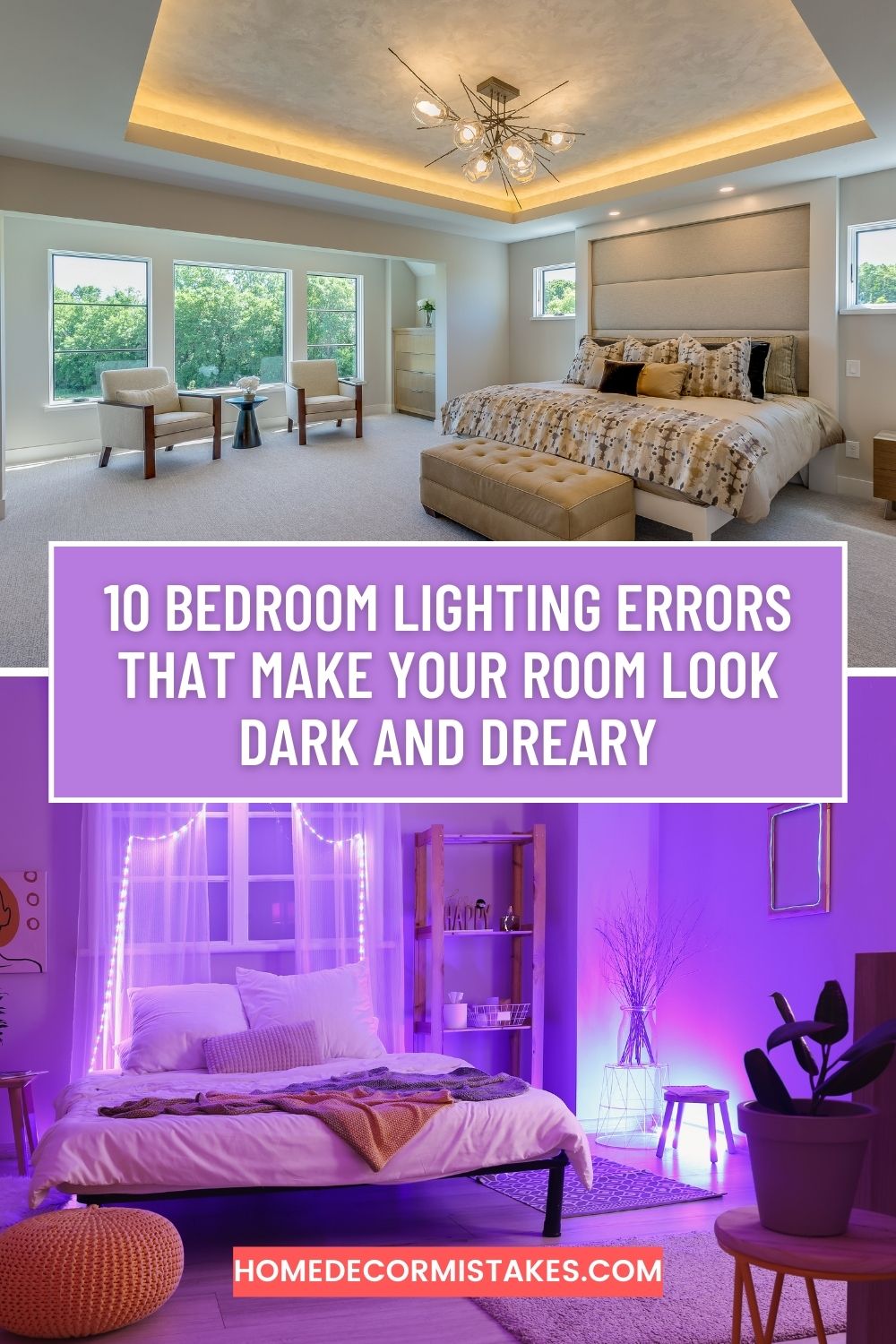10 Bedroom Lighting Errors That Make Your Room Look Dark and Dreary
A bedroom should be a sanctuary—a place where you can relax and unwind. However, poor lighting can transform this haven into a gloomy and unwelcoming space. It’s not just about having enough light; the type and placement of lighting play a crucial role in setting the right mood and functionality. Here are ten common bedroom lighting errors that can make your room look dark and dreary, along with tips on how to avoid them.
- 1. Relying Solely on Overhead Lighting
- 2. Ignoring Natural Light
- 3. Using the Wrong Bulb Color Temperature
- 4. Inadequate Task Lighting
- 5. Not Dimming the Lights
- 6. Ignoring the Importance of Accent Lighting
- 7. Too Few Light Sources
- 8. Choosing the Wrong Lampshades
- 9. Improper Light Placement
- 10. Overlooking the Ceiling Light Fixture Style
1. Relying Solely on Overhead Lighting
One of the most common lighting mistakes is relying exclusively on overhead lighting. While a ceiling light is essential, it shouldn’t be the only source of illumination. Overhead lights can cast harsh shadows and create an uninviting atmosphere.
Solution: Incorporate multiple light sources such as bedside lamps, floor lamps, wall sconces, and accent lights. Layered lighting can provide a balanced and cozy ambiance.
2. Ignoring Natural Light
Natural light can significantly enhance the appearance and feel of your bedroom. Blocking it out with heavy drapes or placing furniture in front of windows can make the room feel dark and claustrophobic.
Solution: Use sheer curtains to allow natural light to filter in while maintaining privacy. Arrange furniture to maximize window exposure and use mirrors to reflect natural light throughout the room.
3. Using the Wrong Bulb Color Temperature
The color temperature of your light bulbs can greatly affect the mood of your bedroom. Bulbs that are too cool (blue-tinted) can make the room feel stark and uninviting, while those that are too warm (yellow-tinted) can make it feel small and dingy.
Solution: Opt for bulbs with a color temperature between 2700K to 3000K for a warm, inviting glow that’s ideal for bedrooms. These bulbs produce a soft white light that is relaxing and conducive to sleep.
4. Inadequate Task Lighting
Bedrooms often serve multiple purposes, such as reading, working, or getting dressed. Inadequate task lighting can make these activities difficult and strain your eyes.
Solution: Add task lighting specific to your needs. Bedside lamps with adjustable arms are perfect for reading, while a well-lit vanity area is essential for grooming.
5. Not Dimming the Lights
Lighting that is always at full brightness can be overwhelming and harsh, especially in a bedroom setting where a relaxed atmosphere is important.
Solution: Install dimmer switches to control the intensity of your lighting. Dimmers allow you to adjust the brightness according to your mood and activity, creating a versatile lighting environment.
6. Ignoring the Importance of Accent Lighting
Accent lighting highlights architectural features and decorative elements, adding depth and dimension to your bedroom. Without it, the room can look flat and uninteresting.
Solution: Use accent lights to highlight artwork, architectural features, or decorative elements. Consider LED strip lights under shelves or behind headboards for a modern touch.
7. Too Few Light Sources
Relying on just one or two light sources can leave parts of your room in shadow, making the entire space feel darker.
Solution: Aim for a combination of overhead, task, and accent lighting to ensure even illumination. A good rule of thumb is to have at least three different light sources in a room.
8. Choosing the Wrong Lampshades
Lampshades that are too dark or opaque can significantly reduce the amount of light emitted, making your room feel dim.
Solution: Choose lampshades that complement your decor but also allow ample light to pass through. Light-colored or translucent lampshades are ideal for maximizing light output.
9. Improper Light Placement
Poorly placed lights can create unflattering shadows and make your room seem smaller and darker than it is.
Solution: Place lights strategically to eliminate dark corners and shadows. For instance, wall sconces on either side of the bed provide balanced illumination and are excellent for reading.
10. Overlooking the Ceiling Light Fixture Style
The style and design of your ceiling light fixture can impact how light is distributed in the room. Fixtures that direct light upwards or have intricate designs may not provide sufficient illumination.
Solution: Choose ceiling fixtures that direct light downwards or have a translucent cover to distribute light evenly. Flush or semi-flush mount fixtures are excellent options for bedrooms with standard ceiling heights.
Conclusion
Lighting is a critical element in creating a comfortable and inviting bedroom. By avoiding these common lighting errors, you can transform your space into a bright, welcoming retreat. Remember to layer your lighting, make the most of natural light, and choose the right fixtures and bulbs to enhance the overall ambiance of your room. With the right lighting, your bedroom can become a true sanctuary of relaxation and comfort.

